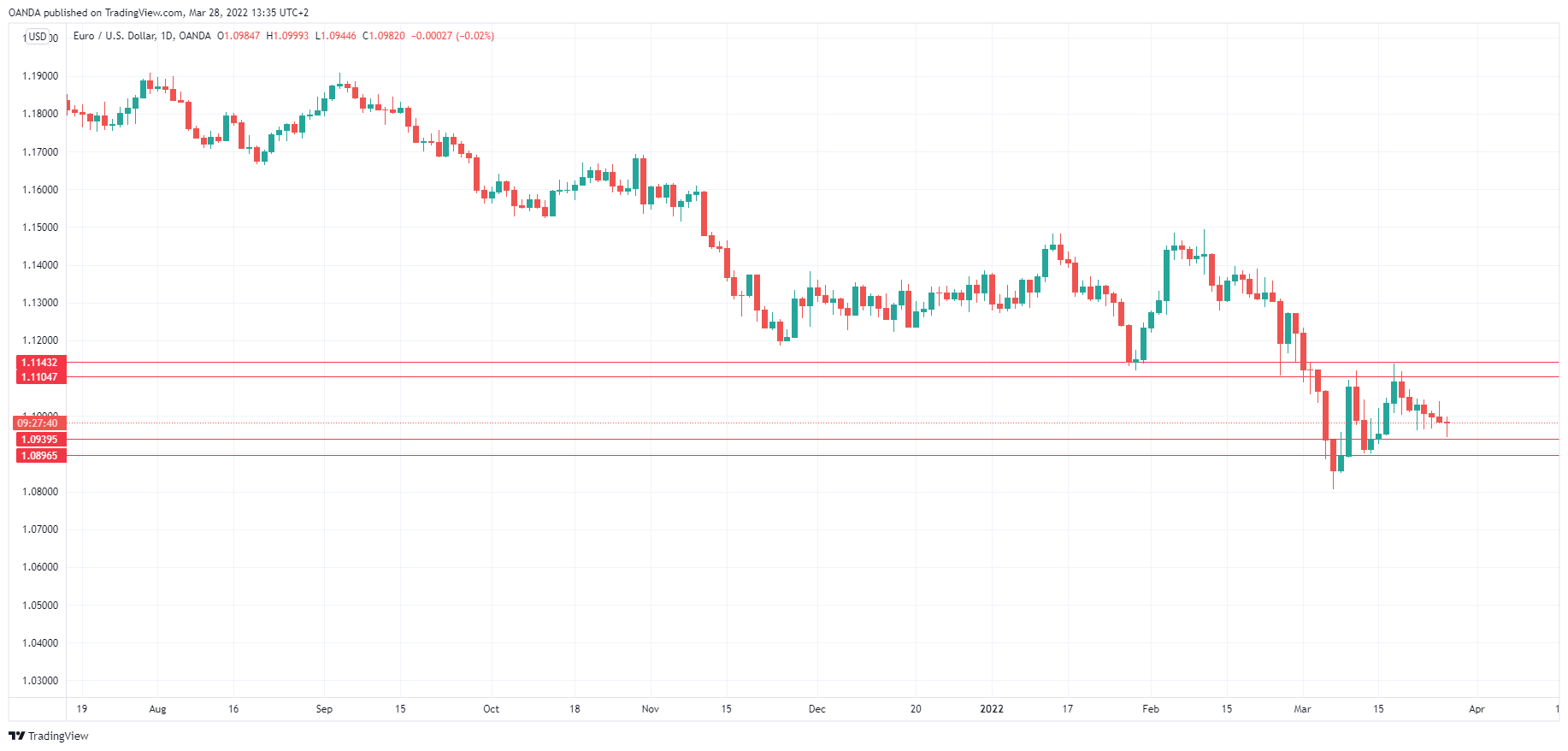The euro has shown limited movement over the past several days and that trend continued on Monday. EUR/USD was almost unchanged, trading at 1.0985 in the European session. There were no eurozone releases on the calendar today and only minor events out of the US, so I expected an uneventful Monday session.
The Ukraine conflict continued to be a key driver for the euro, with the war on the doorstep of Western Europe. There haven’t been many developments of late, with a stalemate between the Russian and Ukraine armies. The biggest headline over the weekend was President Biden’s (mis)statement that President Putin "cannot remain in power."
US officials quickly explained that Biden didn’t mean that Putin should be removed from office, but that Putin shouldn’t exercise power over his neighbors. It sounded like damage control to me, as Biden’s comments were quite clear, but in the extremely unstable situation in Ukraine, US officials don’t want to escalate matters with Putin. This was a relief for the Europeans, who were on board with severe sanctions against Moscow, but are at the same time dependent on Russian energy imports.
The war in Ukraine was weighing on the German economy, the bellwether of the eurozone. Germany’s recovery was in danger of being derailed by the surge in energy prices and possible disruptions in natural gas imports from Russia. The emergence from COVID has resulted in supply chain disruptions, which will only worsen with a war being waged in Europe.
Germany could report a contraction in growth in the first quarter, which would mean that technically the country was in recession since Q4 showed negative growth. If Germany continued to post weak numbers, it will weigh on the eurozone and on the euro, which had declined by 2% in the month of March.
EUR/USD Technical
- EUR/USD had support at 1.0940, followed by 1.0896
- There was resistance at 1.1049, followed by 1.1114


